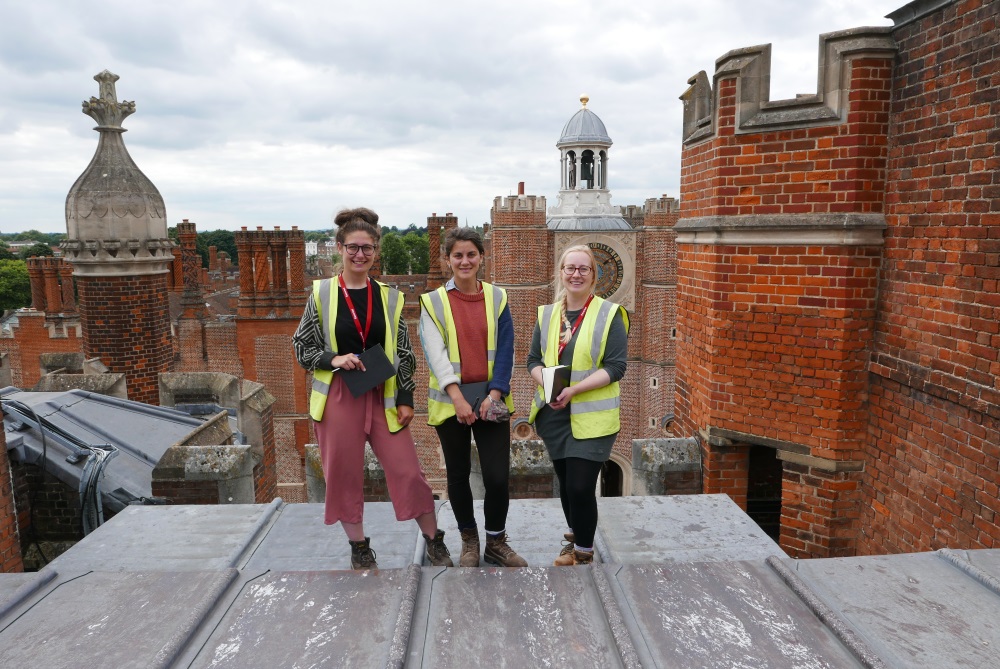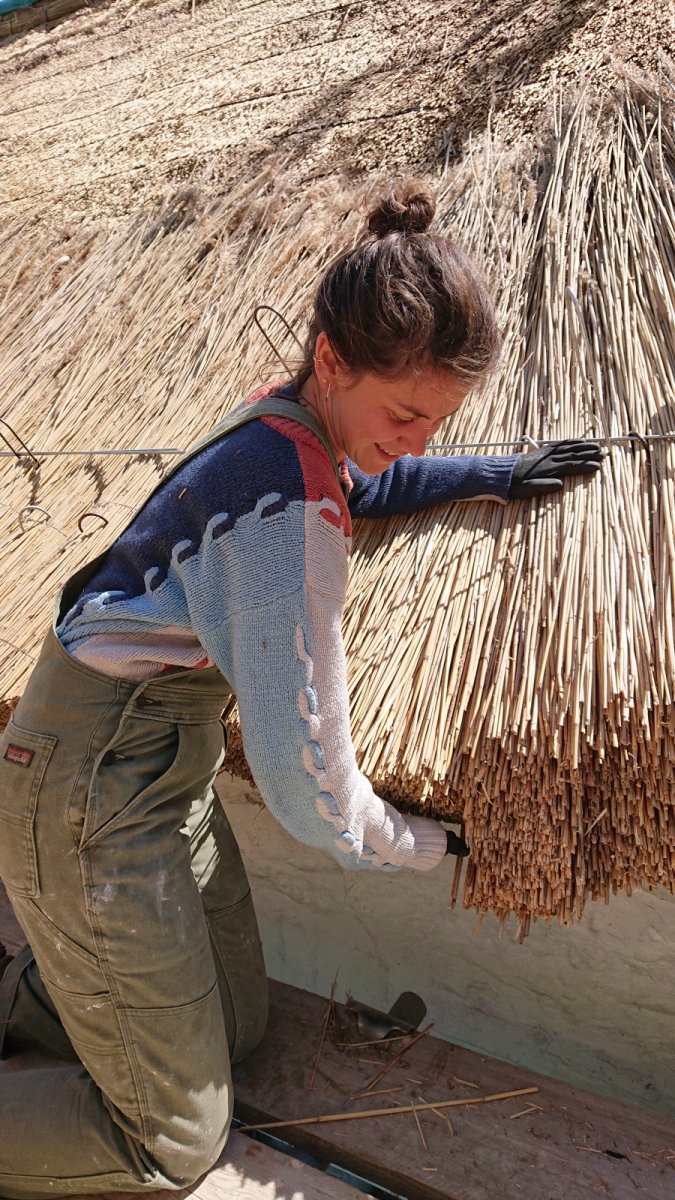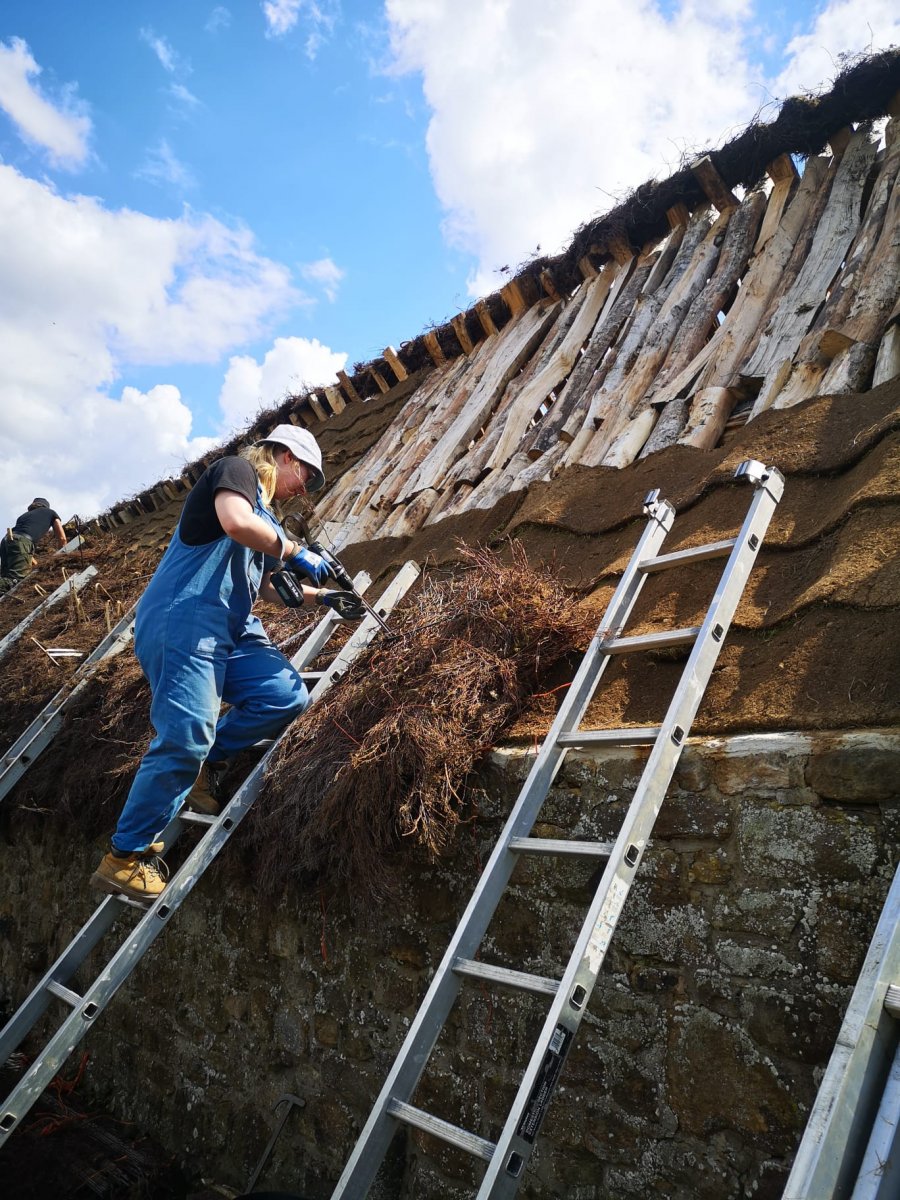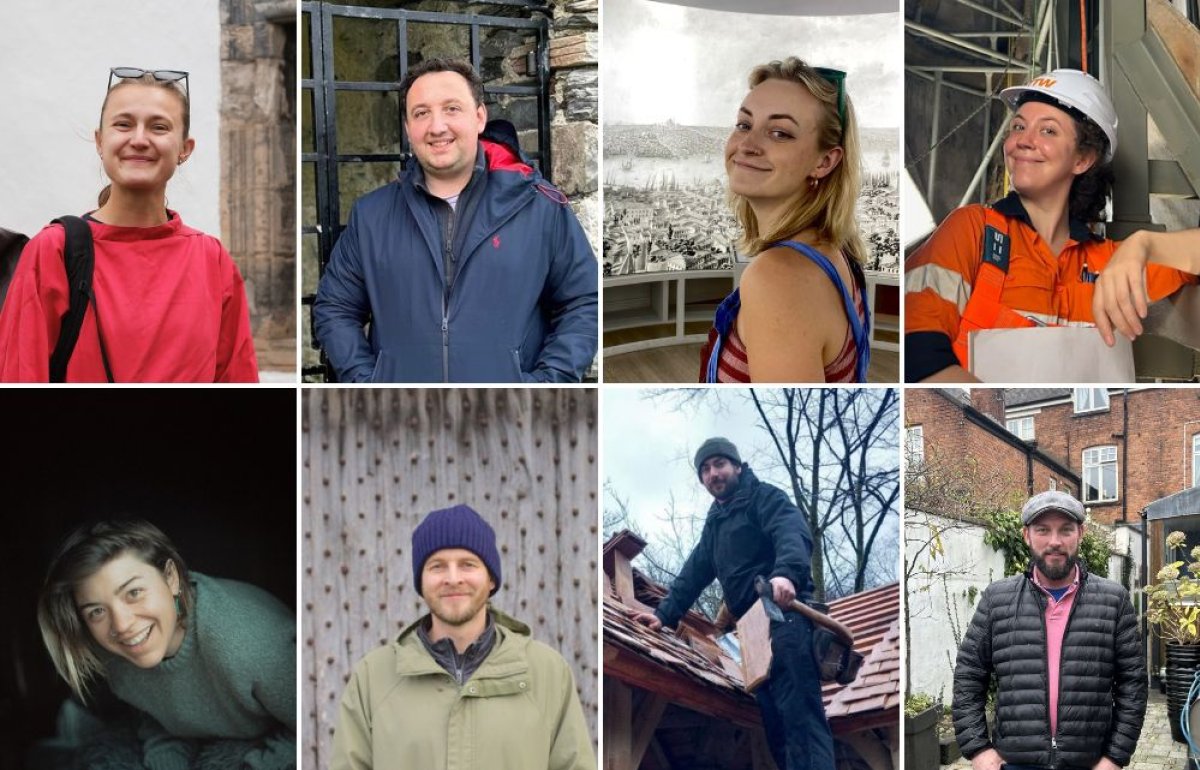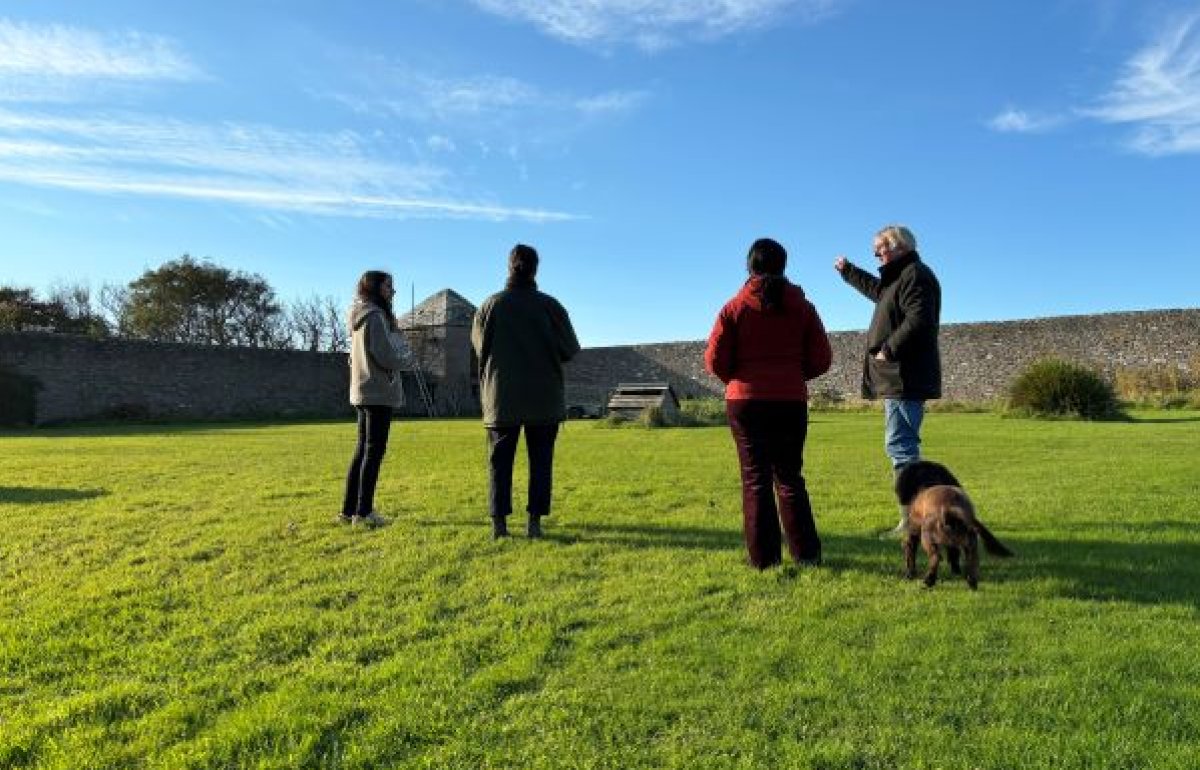SPAB Scholars: reflections on a year to remember
Share on:
Reaching the end of their conservation tour, our talented 2020-21 Scholars Libby Watts, Amy Redman and Lucy Newport reflect on a year full of learning, travel and comradeship...
As many may know Covid-19 hit just as we were due to start our Scholarship in 2020, putting our plans on hold. Now at the end of our experience, we believe it has been a year to match any other. We have visited well over a 150 historic buildings and met a range of passionate professionals and craftspeople, spent 250 days on the road and travelled over 15,000km. We have had opportunities to work with a range of materials, and to gain advice on how to analyse and resolve changes within historic buildings.
Libby, Lucy and Amy on the roof at Hardwick Hall, Derbyshire
We feel so grateful to those who have supported our journey whilst coming out of difficult circumstances, especially as complete cancellation was a real possibility.. We thank Scholarship and Fellowship organisers Catharine Bull and Pip Soodeen for planning and executing a brilliant programme. We thank all our hosts and all those providing us with houses and cottages, fields and outhouses to sleep in; we have become unusually fond of our tents this year.
Although there have been a few disruptions, some of the alterations to how the programme was planned have in fact benefited our overall experience. The programme adaption and ‘bubbling’ has meant we have spent more time with the Fellows, who often provided fresh perspectives and alternative ideas to how we look at buildings as architects and engineers. We’ve learnt how a good relationship between those specifying the repairs and those carrying out the repairs can often be the making of a successful project. Spending time with Fellow Paul Walters and Scholar Andy Faulkner on their project in south Wales really highlighted to us what can be achieved when there is a deep respect and appreciation of the key roles that each person plays within the building project. Both Covid-19 and Brexit have put stresses on the building industry and it highlights to us the tired idea of 'us and them' should be left firmly in the past.
Soft capping at South Huish with the Fellows. Credit: Amy Redman
Having longer periods based in one location has also given us time to really understand an area, to get to grips with the local vernacular building trends and available materials.
It is very hard to pick out a few key visits or highlights of our journey so far due to the breadth and quality of work we have encountered. Whilst all the visits have provided us with new information and understanding, whether it be materials, construction techniques or philosophical approach, we will mention just a few which have stuck in our minds.
Libby learns letter cutting
During our stay at Richard Rolt’s cabin in Herefordshire, we saw two glass specialists, Ben Sinclair and Jim Budd. Whilst Jim gave us an overview of the window-making process, Ben provided a history of glass and the visual benefits of handmade glass over float glass. It is now impossible to look at a historic building and not see how the glazing contributes to the character (or lack of). We were fortunate to visit the last factory in the UK which makes cylinder glass, and witness blowing glass first ha
A highlight for all of us was assisting master thatcher Alan Jones re-thatching a water reed roof in west Wales. On our first meeting at suppliers of environmentally-friendly building materials, Ty Mawr, Alan offered us some homemade bread made using his own wheat straw. He presented the idea to us that traditionally, what provided food also provided shelter, and that modern agricultural methods have disconnected this relationship. Our cereals are now varieties which are grown short with lots of grains meaning that the stalks are no longer suitable for thatching and we are importing materials which are often of poorer quality.
Lucy learning to thatch with water reed with Alan Jones. Credit: Amy Redman
We have seen this trend in other materials too; Scholar Christian Montez explained how oak is now often sourced from eastern Europe with varying quality and potentially contributing to clear cut forestry; Richard Jordan exposed us to the dilemma of how poorer-quality stones from Asia now cover the roofs surrounding the redundant Swithland quarries; and there is the ongoing discussion of why our hydraulic limes are now imported when traditionally the local limestone and earth would have been used. Utilising the natural materials we have in the UK will not only benefit our conservation practices, but could save carbon emissions, improve how we manage our land, retain skilled craftspeople and reinstate a purpose to many areas.
Amy thatches with heather. Credit: Libby Watts.
This Scholarship is just the start of our learning and has taught us that conservation is a never-ending journey of exploration. We feel better equipped with the questions that need asking, to feel empowered by not knowing all the answers and have a great network of contacts across the country to approach for expert advice. We are excited to continue with the rest of the Scholarship and eventually take our experiences and learning back into our work and beyond.
by Amy Redman, Libby Watts and Lucy Newport
Our Since 1930, the SPAB Scholarship has offered an unrivalled training opportunity to architects, surveyors and engineers in the early stages of their career. It allows the successful applicants to travel the country together, learning on site from specialists working in building conservation. Find out more.
Sign up for our email newsletter
Get involved

